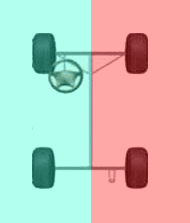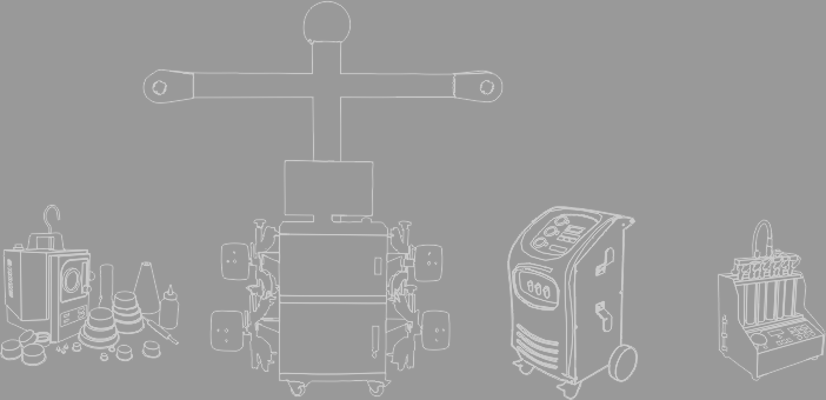
Basically, an automotive wheel system have 5 functions:
1. Support the chassis
2. Absorb impact from the ground
3. Apply Driving force and braking force with friction to the ground
4. Apply lateral resistance to balance the centrifugal force when turn the steering
5. Keep the vehicle run straight by Automatical aligning torque
A key factor is that the left side wheels and right side wheels shall be Symmetric.

In old times, a measure tape is enough to make sure the Symmetry, and do the alignment work. but when the world moves on, people want more comfortable experience with a car. many sophisticated suspension system was invented, while a traditional measure tape still workable but impossible to apply, because the wheel position was controled by not only one knob.
Wheel alignment in some country referred to as 'tracking', is part of standard automobile maintenance that consists of adjusting the angles of the wheels so that they are set to the automotive manufacturer's specification. The purpose of these adjustments is to reduce tire wear, and to ensure that vehicle travel is straight and true, without "pulling" to one side. Of course, Alignment angles can also be altered regardless of the manufacturer's specifications to obtain a specific handling characteristic. Off-road or track racing applications may call for angles to be adjusted well beyond "normal" for a variety of reasons.
Wheel alignment wasn't so important in the beginning of the automotive industry, because there's no much danger from improper wheel aligner when the car was driving at lower than 40km/hr. But as the automotive technology and road system improves, nowadays its common to driver a car at high speed, say mostly 70 - 160km/hr, in this case, improper wheel alignment brings more damage to the vehicle itself, say tire, suspension, chassis, but also potential accident that would risk the driver's life.
Wheel Alignment is often confused with Wheel Balancing. These two really have nothing to do with each other except for the fact that they affect ride and handling. If a wheel is out of balance, it will cause a vibration at high speed that can be felt in the steering wheel and/or the seat. If the alignment is improper, it can cause excessive tire wear and steering or tracking problems. But the clients never know, so we would say, wheel balancing is one of the check list entry to make sure wheel alignment result is satisfying.


